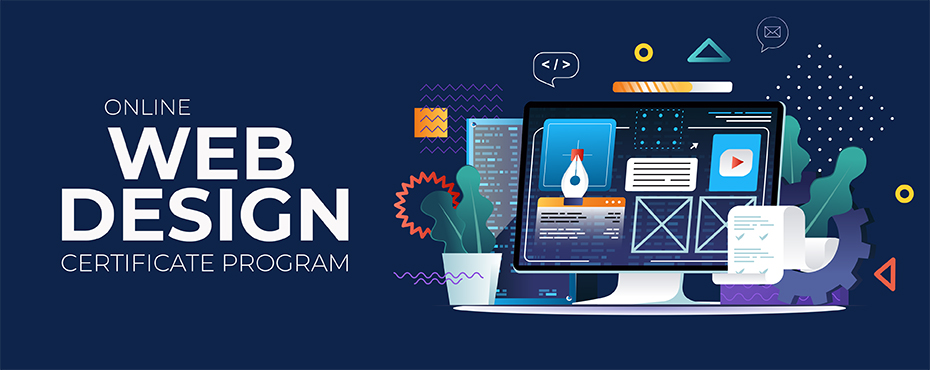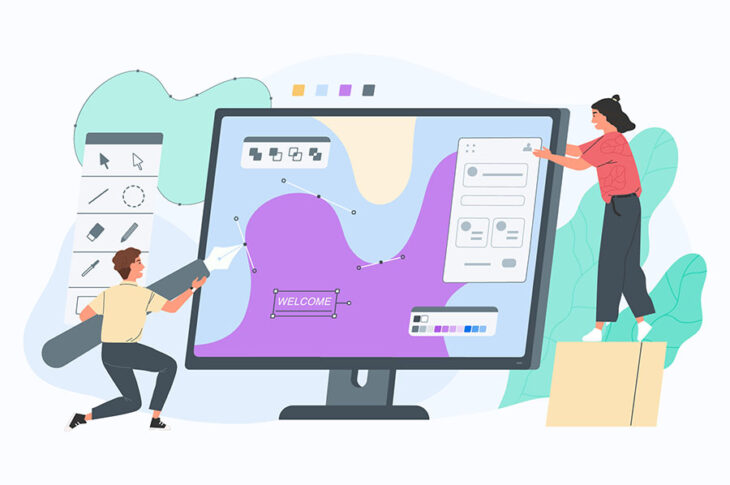Master the Art of Web Style With These Expert Tips and Techniques
In today's digital age, having a visually attractive and properly designed website is important for any type of service or specific looking to make a mark online. Nonetheless, mastering the art of website design requires more than just an eye for visual appeals. It involves a deep understanding of user experience, capability, and the most recent strategies and patterns. Exactly how can you boost your web style skills to the next level? In this discussion, we will certainly discover professional ideas and methods that will certainly not just improve the aesthetic charm of your web site yet also enhance its usability and efficiency. From selecting the appropriate shade combination to incorporating reliable call-to-actions, these understandings will certainly aid you develop a site that not only mesmerizes your audience yet likewise drives results.
Choosing the Right Color Combination
When picking a shade scheme for internet design, it is necessary to consider aspects such as brand name identity, target market, and overall visual goals. The shades used in an internet site can significantly affect how customers view and interact with the website. As a result, it is essential to select colors that line up with the brand's identification and worths. A technology company might opt for a modern-day and streamlined color combination, while a children's brand might pick intense and lively colors.
In addition to brand name identity, the target audience must likewise be taken into factor to consider when picking a shade combination. Comprehending the preferences and assumptions of the target audience can aid produce a aesthetically appealing and appealing site.
Finally, the total visual objectives of the website should be taken into consideration when choosing a shade palette. The color design must enhance the overall design and design of the website, creating a aesthetically attractive and cohesive experience for customers. Whether the objective is to create a peaceful and calming setting or an energetic and dynamic ambience, the shade scheme must be very carefully picked to attain the preferred visual.

Creating Easy To Use Navigating
To enhance the customer experience, it is important to develop easy-to-navigate and user-friendly menus for sites. User-friendly navigating is critical for leading site visitors through the various areas and pages of a site, allowing them to quickly locate the material they are trying to find. When creating the navigating menu, simplicity is crucial. Avoid littering the menu with way too many options, as this can bewilder users and make it hard for them to make choices. Rather, focus on providing clear and concise labels for every food selection thing, using acquainted terms that users can easily recognize.

Along with clear labels and logical company, it is very important to make the navigation menu quickly obtainable. Position it in a popular place, such as on top of the page or in a fixed setting, to make sure that individuals can quickly locate and access it from anywhere on the website. Consider utilizing a responsive design strategy to make sure that the navigation menu stays easily accessible and functional on different devices, consisting of mobile phones and tablets.
Including Responsive Layout Methods
In order to optimize web site functionality throughout various devices, incorporating receptive style strategies is vital. Receptive style is a website design method that permits websites to react and adapt to different display dimensions and positionings. With the raising usage of smart devices and tablet computers, it is critical for internet designers to produce websites that supply an ideal watching experience for users on all tools.
One of the key techniques in receptive layout is the usage of liquid grids. Instead of developing fixed-width formats, web designers create flexible grids that adjust and resize based upon the screen dimension. This guarantees that the web content on the web site remains understandable and accessible, no matter the tool being made use of.
Another essential method is making use of adaptable images and media. By establishing the maximum width of video clips and pictures to 100%, they will instantly scale down to fit smaller screens. This prevents images from being cut off or distorted on mobile devices.
In addition, responsive style involves using media queries to use various styles and layouts based upon the tool's screen size. This permits web designers to develop a seamless experience by personalizing the discussion of material according to the gadget being used.
Optimizing Internet Site Speed and Performance
One important facet of web layout is enhancing website rate and performance. In today's fast-paced digital globe, customers have little perseverance for slow-loading websites. A sluggish internet site can cause a bad customer experience, high bounce rates, and reduced online search engine rankings. To ensure that your internet site performs at its best, there are a number of approaches you can carry out.
To start with, optimizing pictures is vital Find Out More for improving site speed. Images should be effectively compressed and resized to minimize their file dimension without giving up high quality. This can be done utilizing picture optimization devices or plugins.
An additional important aspect to take into consideration is web site caching. Caching includes storing static variations of internet pages to ensure that they can be quickly fetched as opposed to producing them from the ground up each time a user sees the website (Webwize web design Tomball). This considerably decreases loading times and enhances total efficiency
Minifying CSS and JavaScript files is another reliable strategy. Eliminating unnecessary whitespace, comments, and reducing code complexity can greatly improve site rate.
Carrying Out Efficient Call-to-Actions
Producing compelling and convincing call-to-actions is a crucial aspect of reliable internet style. A call-to-action (CTA) is a graphic design web design timely or guideline that urges users to take a details action on a website, such as buying, registering for an e-newsletter, or contacting the firm. Applying reliable CTAs can substantially enhance customer involvement and conversion prices.
To develop engaging CTAs, it is vital to use concise and clear language that conveys the value proposal and advantages of taking the desired action. The CTA must be visually prominent on the page, utilizing contrasting shades and style elements that attract the user's interest. Furthermore, making use of action verbs and producing a sense of urgency can additionally boost the efficiency of the CTA.
Additionally, it is vital to place the CTA purposefully on the page. Placing it above the fold, where it is immediately visible to customers without needing to scroll, can significantly enhance its visibility and click-through prices. It is additionally helpful to examine different variations of CTAs to identify which ones resonate finest with customers and drive the highest possible conversion prices.
Verdict
To conclude, mastering the art of web layout calls for attention to various elements such as color combination selection, straightforward navigation, receptive design strategies, website speed optimization, and efficient call-to-actions. By applying these specialist pointers and techniques, web developers can produce practical and visually appealing web sites that enhance individual experience and drive wanted activities.
The colors used in an internet site can greatly affect just how individuals view and interact with the site.In order to optimize internet site performance across various tools, integrating responsive design strategies is essential. Responsive design is an internet style method that permits web sites to react and adjust to various display sizes and positionings. With the raising use of smart devices and tablets, it is important for internet developers to develop sites that supply an ideal viewing experience for individuals on all devices.
